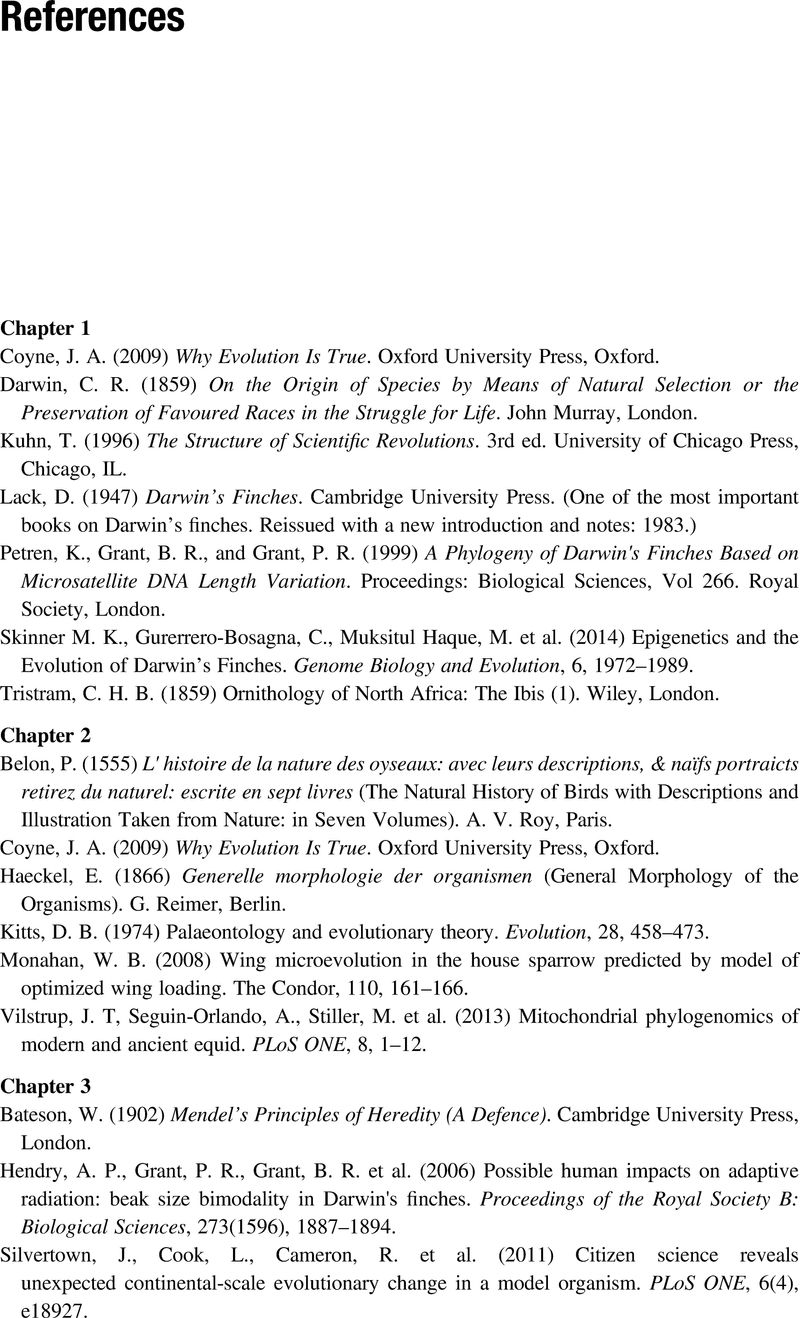Book contents
- Biological Evolution
- Biological Evolution
- Copyright page
- Contents
- Preface
- Acknowledgements
- 1 Biological Evolution
- 2 Reviewing the Evidence for Evolution
- 3 Genetic Variation within Populations
- 4 Natural Selection and Adaptive Change
- 5 Evolution and Development
- 6 The Origins of Biodiversity
- 7 Taxonomy and the Diversity of Life
- 8 The History and Origins of Life on Earth
- 9 Molecules and Evolution
- 10 Human Evolution
- 11 Trends and Patterns in Evolution
- 12 Questions, Debate and Controversy
- References
- Recommended Reading
- Figure Credits
- Chapter Reviewers
- Index
- References
References
Published online by Cambridge University Press: 06 November 2020
- Biological Evolution
- Biological Evolution
- Copyright page
- Contents
- Preface
- Acknowledgements
- 1 Biological Evolution
- 2 Reviewing the Evidence for Evolution
- 3 Genetic Variation within Populations
- 4 Natural Selection and Adaptive Change
- 5 Evolution and Development
- 6 The Origins of Biodiversity
- 7 Taxonomy and the Diversity of Life
- 8 The History and Origins of Life on Earth
- 9 Molecules and Evolution
- 10 Human Evolution
- 11 Trends and Patterns in Evolution
- 12 Questions, Debate and Controversy
- References
- Recommended Reading
- Figure Credits
- Chapter Reviewers
- Index
- References
Summary

Information
- Type
- Chapter
- Information
- Biological EvolutionAn Introduction, pp. 251 - 254Publisher: Cambridge University PressPrint publication year: 2020
